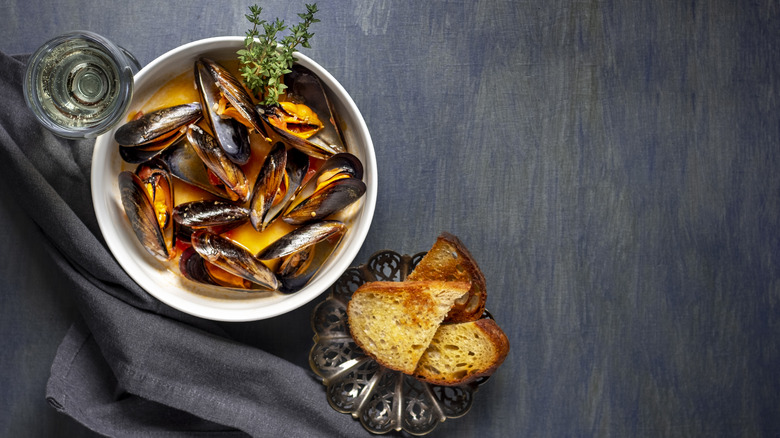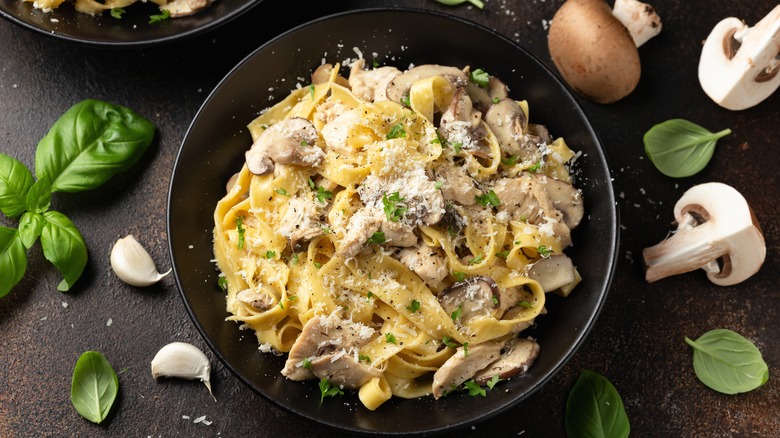You Shouldn't Ask For Extra Cheese At Restaurants In Italy. Here's Why
Italians love a good food rule. Cappuccinos are for breakfast only, but espressos are fine any time of day, and good luck getting a truly great Italian meal before seven or eight in the evening in Rome. Eating in Italy is not like a visit to your local mom-and-pop Italian place, nor is it equivalent to bottomless pasta at Olive Garden. Recipes have been studied, inspected, and deemed perfect by generations of Italian cooks — no need to stray from tradition. So, if your dish was meant to have cheese, it will be there already.
You'll see a dusting of cheese on top of certain Italian dishes, especially the ones that feature tomato sauce. Pasta alla norma is served with ricotta salata grated on top, and bolognese pairs well with a sharp parmesan. Traditional Roman pasta dishes are already pretty cheese-heavy — like cacio e pepe, carbonara, and alla gricia. So asking for more cheese — or asking for cheese where there was none to begin with — could be seen as insulting the recipe or the chef. And you definitely should not ask for cheese with your seafood.
You definitely shouldn't ask for cheese on your mussels
Seafood in Italy is treated with the utmost care. It's caught and cooked as soon as possible so it stays fresh and delicious. The flavors of most seafood and fish are so delicate that Italian recipes are made so the seafood stands out. Even the ingredients are simple: a squeeze of lemon, and a few capers. You don't want any ingredient to outshine or overpower the subtle flavor of langoustine or even tuna — and cheese is one of those ingredients. You don't want something like a pecorino Romano or Parmigiano Reggiano smothering the taste of spaghetti with clams or a bowl of mussels. Putting cheese on top of any of those would be too much.
No one is quite sure where or indeed why this rule originated. Although perhaps it comes from the fact that many of Italy's best and most prodigious cheesemaking regions — Piedmont, Emilia-Romagna — are landlocked. That's not to say it never happens: Seafood risottos are sometimes graced with a little cheese.
Break the rules ... but do it in your own kitchen
There are plenty of dishes around the world that feature cheese with seafood. The French have their cheeses and aren't shy about pairing them with seafood. For example, moule au Roquefort (Roquefort cheese with mussels) is considered a classic French recipe. If you ask around enough, you'll be able to find a chef in Italy who does use cheese in a dish featuring seafood, but it's rare.
Don't let Italian tradition stop you from experimenting and breaking a few rules. But it's probably best to stick to your own kitchen and not a trattoria in Milan. If you're pairing seafood with cheese, try to find one that complements your seafood, rather than overpowering it. Lobster and ricotta in a ravioli, and even a pizza topped with salty mozzarella and bright, briny anchovies. And yes, your everything bagel with scallion cream cheese and lox counts. Just as long as you aren't dumping a load of cream and cheese on your delicate scallops or shrimp — save that for the chicken Alfredo.


